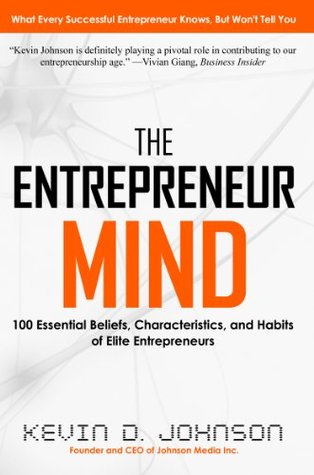More on this book
Kindle Notes & Highlights
Entrepreneurs don’t follow the market; they define the market.
A business can fail in two ways: not surviving beyond its start and not reaching its full potential.
75 percent of businesses do not survive fifteen years or more. Some of the reasons for failure include undercapitalization, overexpansion, poor planning, and a declining market.
One of the main obstacles to thinking big is the inability to outgrow your environment.
their environment restricts their thinking
Many entrepreneurs lack the motivation to pursue big ideas.
monetary success in business that diminishes their willingness to pursue bigger ideas.
Michael Gerber says, “Comfort makes cowards of us all.”
Several entrepreneurs lack the self-confidence to think big.
Entrepreneurs often lack the diversity and expertise of influencers required to think and eventually to execute in a big way.
“Talk to as many people as you can. What you want are the people who will tell you what’s wrong with your idea. They are the ones you can learn from.”
People with the ability and the audacity to think big carve the path to greatness.
If your business depends on you, you don’t own a business—you have a job.
Until an entrepreneur’s company runs without the founder, that person is just self-employed, the lowest rung in the hierarchy of entrepreneurs.
Before you even start your business, focus on planning how to get rid of yourself, especially if the business is service-oriented and you are the one serving.
“An entrepreneur is one who organizes, manages, and assumes the risks of a business or enterprise.”
The best entrepreneurs create environments of stressful urgency. Entrepreneurs know that start-ups rarely get anything done in a relaxed, take-your-time environment.
Build a Company That Is Systems-Dependent, Not People-Dependent
First, clearly separate and describe the roles in the business in written form. Second, use technology to map out and build systems that simplify and automate important tasks.
Write a job description for crucial positions like CEO, CFO, vice president of sales, vice president of operations, and so on.
using technology, create process maps to visualize how you will execute different tasks.
Tell everyone what you want to do and someone will want to help you do it. —W. Clement Stone, businessman, philanthropist
When you start your business, lose the ego immediately.
One of the biggest advantages of entrepreneurship is independence and flexibility to prioritize.
The key is not to prioritize what’s on your schedule, but to schedule your priorities.
veteran and smart entrepreneurs give priority to those tasks that are painful but which pay off in the end.
Do important tasks first thing in the morning when you get up. This
Some environments may subconsciously cause you to have more anxiety or stress than others.
Take substantive breaks. Do something that takes your mind completely off the task at hand. For example, I like to go for a run, go get the mail, or dance.
If you believe in the value of your products and services, protect your IP from the very start, no matter the cost.
Make sure that you protect the most important asset you have, your company, with adequate legal services from an attorney.
Surround yourself with honest people who tell you the good, the bad, and the ugly. If you don’t, you may become the laughingstock of your industry, too.
Be skeptical of a client who seems not to know what is needed or who constantly makes changes.
Be careful if a client is not willing to pay an hourly rate or a piece rate of some kind.
Without a comprehensive agreement you have no way to protect your interests, assess the progress of the work you have done, and verify the deliverable.
Take heed of any less than good feelings you have about a potential client.
Entrepreneurs who have figured out how to make money while doing nothing have reached the upper echelon of entrepreneurship.
“Change happens when the pain to stay the same exceeds the pain to change.”
Entrepreneurs lack the dedication and energy to follow up.
Committed to a successful outcome, I put on my calendar to follow up with my contact every week or when I found information or news that could relate to her position at the company.
Chances are that you will realize that nonprofit really means profit—at least for you.
Failure Doesn’t Kill You; It Makes You Stronger
would much rather have a terrible pitch from which I can recover than a terrible idea that has no promise.”
“The gist of good partnering is that it should accelerate cash flow, increase revenue, and reduce costs. Partnerships built on solid business principles like these have a much greater likelihood of succeeding.”
selling became more fun because I didn’t see myself as a salesman, per se, but as a person who creatively leveraged resources to get more of what I wanted.
the speed of your organization, especially in our fast-paced, technology-driven, I-want-it-now world, is most important.
your team must be a well-oiled machine that works harder than any other team.
frugal start-up is a wise start-up.
no matter if you are in the initial stages of developing your start-up or if you are a developed company, don’t underestimate the competitive threat of substitutes.
five-step process: 1. Respond quickly and calmly. 2. Listen attentively after you offer a sincere apology. 3. Tell the customer how you plan to address the problem in detail with a specific time frame. 4. Give updates often on the progress of your resolution. 5. When the issue is resolved, make sure the customer is satisfied.


